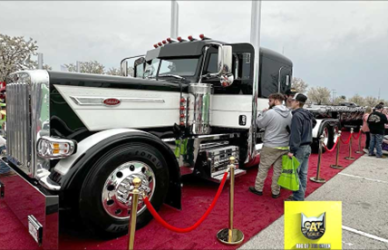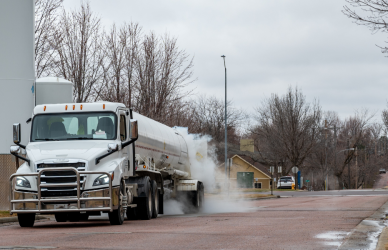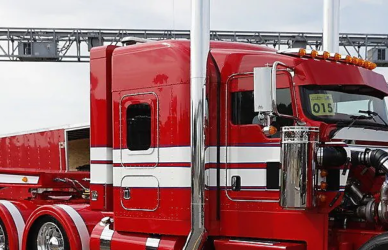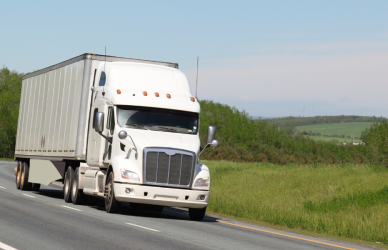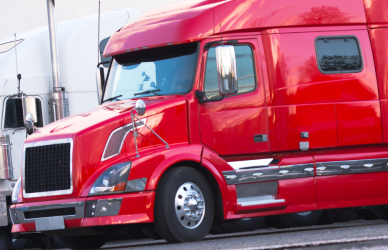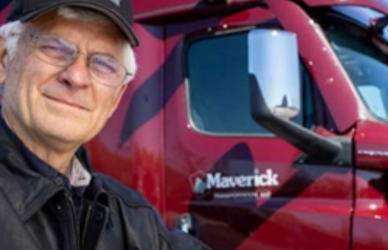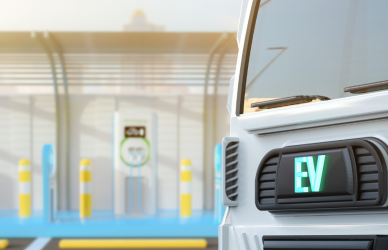The National Highway Traffic Safety Administration’s (NHTSA) latest proposal to enforce side underride guards has trucking experts worried about the potential consequences. While the aim is to enhance safety, it may actually lead to disaster on rail crossings.
In April, NHTSA’s Advance Notice of Proposed Rulemaking (ANPRM) generated over 2,000 comments on the Federal Register; however, it is evident that the agency lacks clarity on how mandating side underride guards would impact the operational safety of commercial truck drivers.
“NHTSA did not take into consideration the practicability and feasibility of side underride guards on trailer and semitrailer operations,” the ANPRM reads.
Operational concerns are a significant issue in the transportation industry. One area of concern a coalition of rail and port associations brought up is the need for an exemption for intermodal chassis, which are frequently stacked. This stacking could be hindered by underride guards, making an exemption necessary.
The most pressing safety concerns, however, revolve around the issue of ground clearance at rail crossings. This raises important questions regarding the safety of vehicles traversing these crossings.
“Could side underride guards scrape or snag on the road surface when the trailer travels over humped surfaces like some rail crossings or when the truck backs into a steep loading dock ramp?” asks NHTSA’s ANPRM. “Could movement of the trailer then be disabled, damaging the guards and necessitating replacement?”
The answer to these questions is most likely a resounding yes. The Owner-Operator Independent Drivers Association (OOIDA), expressing their views through comments filed in the Federal Register, firmly believes so.
“OOIDA has notably heard from drivers about the dangers of traversing highway-rail crossings with side underrides attached to their trailers,” the organization wrote. “In 2022, there were more than 2,000 highway-rail crossing collisions in the U.S. and more than 30,000 reports of blocked crossings submitted to the Federal Railroad Administration’s public complaint portal.”
Truck driver Patrick Newbill’s comment cuts to the core of the problem in the regulatory docket. “We already have a hard enough time backing up into steep docks, going over rail crossings, and making sharp turns,” he said. “Things are not set up to accommodate underride guards. They will just cause more trailer and property damage.”
Flatbed truck driver Norman Lassen provided an insightful comment on the potential effects of the mandate, highlighting the significant and unforeseen impacts it could have on his operations.
“As a flatbed owner, I will be forced to put my dunnage, V boards, ladders, and other equipment I currently store under the trailer between the frame rails, out of sight,” he said. Storing it all on top of the trailer “will reduce the loading space on the trailer and will invite theft. Not to mention the added weight on a truck that needs the lightest weight possible to serve my customers.”
Lassen added he felt that “the guards will cause more truck-train collisions, as they will high-center trucks on sloped crossings even more than what happens now.”
The Truck and Trailer Manufacturers Association (TTMA) stands with drivers who are against the mandate.
“TTMA believes that adoption of current SUG designs will necessarily increase incidents of trailers getting hung up at railway crossings,” the organization wrote in its comment to NHTSA. “[That] would increase risk of death and injury at these crossings. Again, the magnitude of this risk is hard to quantify accurately, but also could be greater than any benefit.”
The recent increase in high-profile train derailments has raised concerns about liability in cases of potential rail disasters. What happens if a truck equipped with a government-mandated side underride guard gets stuck at a rail crossing, intersection, ramp, or hill? It is important to note that existing roads were not designed with side underride guards in mind, and the OOIDA believes that the carrier and/or its driver would be held responsible for any liability in such situations.
“In these situations,” the OOIDA wrote, “due to sovereign immunity at the federal and state level for claims relating to negligent roadway design and construction, motor carriers will be unable to recover damage costs sustained from underride equipment on poorly designed or constructed areas of the current infrastructure.”
According to OOIDA, motor carriers could “find themselves facing liability for damage caused by underride equipment. Both of these scenarios require the motor carrier, or its insurer if the policy provides applicable coverage, to bear the cost of resulting damage.”
Trailer owners and pullers face a lengthy list of potential issues and costs associated with installing and maintaining side underride guards. These include increased fuel consumption, interference with inspections, and damage to trailer bodies and low-hanging rails. It’s important to note that the NHTSA’s own analysis does not assert that the benefits of the mandate outweigh the costs.
In fact, the ANPRM estimates that the mandate could cost the trucking industry approximately $73 million per year for each life saved. This calculation is based on dividing the projected costs of around a billion dollars by the projected lives saved: 17.
Rail crossings lack the same clear signage as highway bridges, leaving truck drivers uncertain about clearance heights. The Federal Railroad Administration (FRA) does not provide information on clearance heights, and there is no publicly available source for such information. The responsibility for calculating clearance falls solely on the driver, with no clear guidance from the FRA.
The FRA has discussed the issue of lowering trailer clearances with the NHTSA, but no solutions have been implemented yet. Truck drivers are responsible for avoiding trailer-related incidents at rail crossings, with minimal assistance from signage or other information sources.
Source: Overdrive



